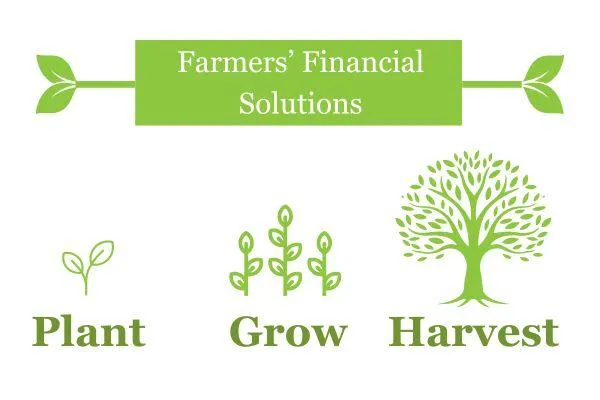Dangerfield Consulting
Farm Financial Management Services
We empower farms to be successful businesses.
From Small Farm Financial Management to Complex Agricultural Business Operations,
Our Expert Team of Consultants is Here to Help You Save Time and Money.
ADVISORY

Do you want to improve farm management and increase profitability?
We apply our extensive experience to coach you with the education, systems and tools needed for you to reap actual benefits.
We Can Help With:
Financial Analysis
Strategic Planning
Operational Consulting
Profitability

Advisory Services:
Financial Advisory – We help you dig into your data to make key business decisions as you plow ahead to future growth and success. This may not always mean more income, but more work life balance or time to travel.
Advanced Coaching – Understanding the financial health of your farm business and adding important nutrients to a plan that sprouts rewarding action is just one piece of the puzzle. Knowing where to seed next is another big question mark. Our team helps you sow the right steps to help your farm business grow.
Ongoing Support – We’re here year-round to help you stay organized, on track, and in control of your farm finances—no matter the season. Whether it’s monthly check-ins, troubleshooting QuickBooks™, or answering unexpected questions, you’ve got a steady hand alongside you as your business evolves.
Business Planning – We work with you to create a practical, numbers-backed roadmap for your farm’s future. Whether you’re expanding, transitioning ownership, or rethinking your priorities, we help you plan with clarity—so every decision supports your goals and your values.
We can take you from selecting and implementing the right tools (QuickBooks™ or Xero™) for your specific farm business to real-time results.
We Handle:
QuickBooks Online™ (QBO)
QuickBooks Desktop™ (QBD)
Training Services:
Creating a plan and purchasing the right software solutions to get your business to the next level are only as good as how well they are implemented. Our team provides hands-on help to implement your software and we offer continuing support.
Our expert training services include helping you review your current accounting system and status of your information, selecting the right version of QuickBooks™ or Xero™, seting up your QuickBooks™ or Xero™, how to enter your data, setting up and running payroll, bank and account reconciliations. And, most important of all, we teach you to set up the processes necessary to get your inputs, plantings, labor, and harvests entered so you can obtain the reporting you need to make better decisions.
Investing in our training services is the first step. Our seasoned team of consultants is here to guide you every step of the way in maintaining your bookkeeping and farm records. We help you train your staff members, identify improper or abused accounting areas, and hoe the row alongside you as you travel this journey.
TRAINING

Are you sure you have the right information to make better farm management decisions?
ACCOUNTING SERVICES

Would you like to spend less time on bookkeeping and more time farming?
We use the latest technology to produce time saving automation of data entry, invoices, billing and other functions so that you can harvest more time to focus on what you do best.
Our Experience Includes Data Entry in:
QuickBooks™
Xero™
Integrated Applications
Accounting Services:
Accounting data entry of all transactions for you including inputs, plantings, and harvests. We can also do whatever portion you don’t have time for. We’ll team with you to get the job done the best way for your specific farm business.
Management of inputs for your farm production, plantings, crop costing, harvests, plus all the usual: accounts receivable, accounts payable, banking and account reconciliation, payroll services, and crop or product inventory.
Organization of your accounting input to make data entry and automation more efficient including apps that integrate with QuickBooks software.
Certified QuickBooks ProAdvisor
Specializing in Farm Businesses.
Outstanding Accounting Services

Products & Software
Are you using the best tools to help manage your farm business?
As an Certified QuickBooks ProAdvisor, Dangerfield Consulting can help you choose the right QuickBooks versions.
Fill out our Contact Form or Call us at (706) 318-2496 for details. If you’re looking to purchase and implement QuickBooks™ for the very first time or interested in an upgrade.

Webinars
Are you tired of training that takes too much time away from farming and doesn’t get to the point?
Whether in person or webinar based, Dangerfield Consulting uses the latest methods and approaches for training that are easy, focused and time efficient.
Fill out our Contact Form or Call us at (706) 318-2496 for details.
We Understand Farms.
Dangerfield Consulting’s key objective is for farms to learn QuickBooks™ or Xero™ and apply that knowledge to farm business operations to understand where they are, where they need to make changes, and where to grow – to better manage the farm business.
Click Below To Schedule a FREE Consultation
We'll discuss your goals, challenges and provide you with the best options to meet your needs.





Dangerfield Consulting, Inc.
Farm Financial Services
P. O. Box 2
Natural Bridge, VA 24578
Not Sure Where Your Business Stands?
Take Our Financial Assessment
©2025 Dangerfield Consulting Farm Services, all rights reserved.
